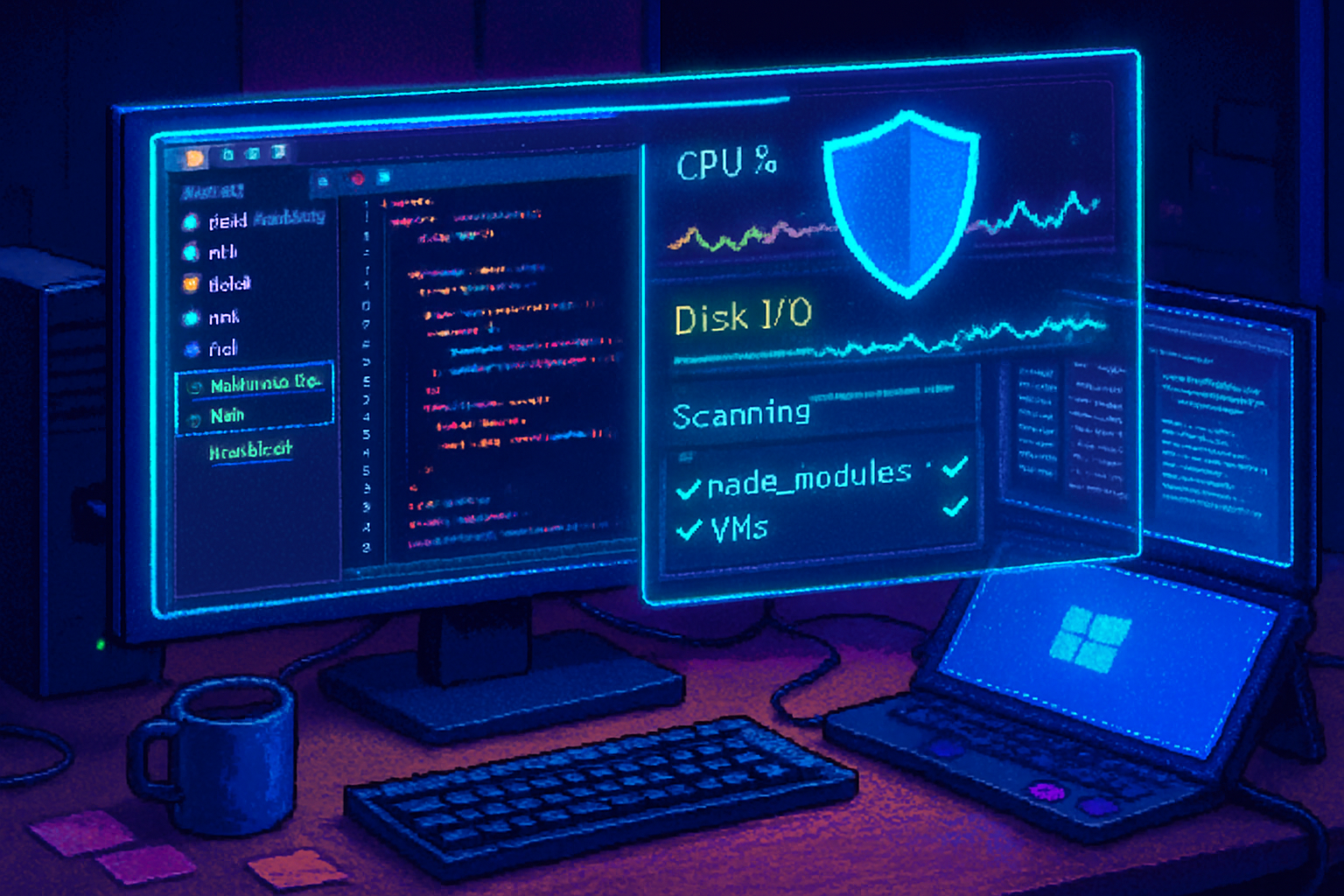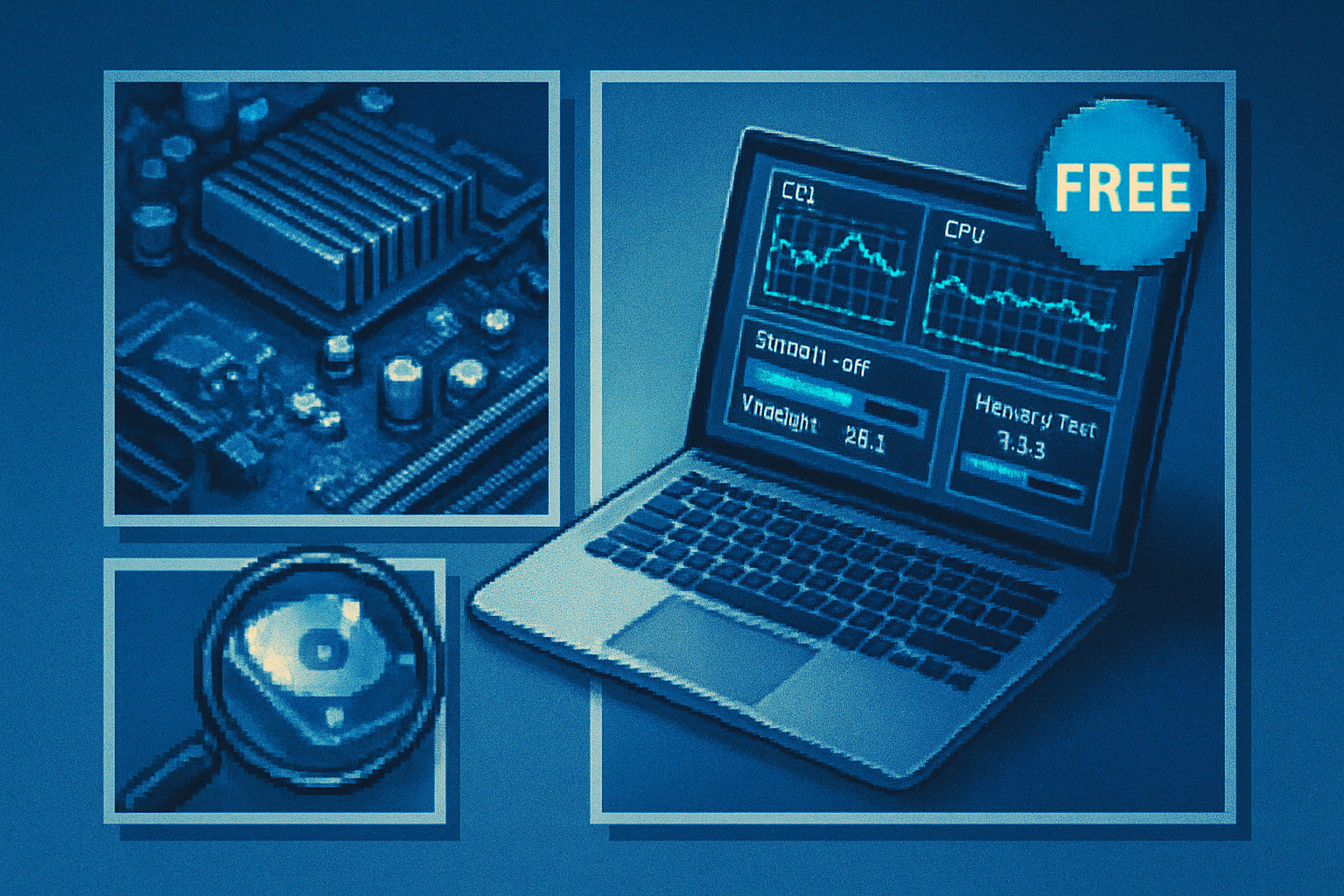· guides · 7 min read
The Role of Antivirus Software in Windows Performance
A practical, in-depth look at how antivirus software affects Windows PC performance - what causes slowdowns, how to measure impact, and concrete settings and steps to optimize antivirus behavior without compromising security.

Introduction
Antivirus software protects Windows PCs from malware, ransomware, and other threats - but that protection can come with a cost: CPU cycles, disk I/O, memory use, and slowed application or boot times. This article explains how antivirus (AV) interacts with Windows, where performance impacts come from, how to measure them, and practical, safe optimizations to reduce slowdowns while keeping your system protected.
How antivirus works (brief overview)
- Real-time (on-access) scanning - checks files as they are opened, created, or executed.
- Scheduled (on-demand) scans - full or quick scans that traverse files and folders at scheduled times.
- Signature and definition updates - frequent downloads and signature/database loads.
- Heuristic and behavior analysis - emulation or behavior-monitoring for suspicious activity.
- Cloud-based/file reputation lookups - remote queries to determine file safety.
- File system filter drivers and kernel components - integrate deeply with OS I/O stack to intercept file operations.
Each of these functions can affect performance in different ways - understanding the details helps optimize without blindly disabling protection.
Where antivirus impacts Windows performance
- CPU
- Real-time scanning consumes CPU when many files are accessed (e.g., extracting archives, compiling code or building projects, installing/updating apps).
- Heuristic and emulation engines may run CPU-heavy analysis for unknown binaries.
- Disk I/O and latency
- Scanning causes additional reads/writes. On HDDs, this increases seek times and visible slowdowns. On SSDs the effect is often smaller but still present during intensive scans.
- Large scans (full system or archives) can saturate storage I/O, slowing other apps.
- Memory
- Modern AV uses some resident memory for resident protection (drivers, services, caches). On low-RAM systems it can contribute to paging.
- Boot and application startup
- AV initialization and early scanning can add time to boot and to the first-run of applications that cause many file accesses.
- Network performance
- Cloud checks and updates cause network traffic. In constrained or metered networks this may be noticeable.
- Virtualization, containers, and development workflows
- Development environments (node_modules, compiled artifacts), virtual machines, Docker images, and build directories cause heavy file churn that AV may scan repeatedly, slowing builds and VM image operations.
Common scenarios that cause slowdowns
- Extracting large compressed archives.
- Compiling large codebases or running many small file operations (npm, Python pip installs, dotnet builds).
- Running virtual machines or containers.
- Installing or updating software with many file operations.
- Background full-system scans running during interactive use.
Measuring antivirus impact (how to verify before you change anything)
- Basic tools
- Task Manager - check CPU, disk, and memory usage for AV processes.
- Resource Monitor - see per-process disk and I/O details.
- Process Explorer / Process Monitor (Sysinternals) for deep inspection: https://learn.microsoft.com/sysinternals/
- Windows Performance Toolkit (WPT)
- Use Windows Performance Recorder / Windows Performance Analyzer for detailed traces of boot time and I/O (WPT docs).
- Timed tests
- Run a representative task (build, archive extract, VM snapshot) with AV enabled, record time; then temporarily disable on-access scanning (if safe) or add exclusions and repeat. Always re-enable protection and prefer narrow exclusions.
- Use third-party lab tests as context
- AV-Comparatives and AV‑Test publish performance scores across products; useful for comparing baseline impacts across AV solutions (AV-Comparatives performance tests, AV‑Test performance section).
Optimization strategies: reduce slowdowns safely
Important principle: prioritize security. Avoid broad or permanent disabling of AV. Use specific, minimal adjustments where justified.
- Pick one real-time protection product
- Running multiple real-time AV products causes conflicts and extra scanning. Use a single up-to-date anti-malware engine. Windows Defender (Microsoft Defender Antivirus) is integrated, well-optimized, and performs well in many independent tests.
- Add targeted exclusions (the most effective tactic)
- Exclude developer/build directories (node_modules, target, obj, \build, dist).
- Exclude virtualization and VM image paths (Hyper-V VHD/VHDX paths, VirtualBox VMs, Docker storage locations).
- Exclude large media libraries used by editing software if the files are trusted.
Security note: limit exclusions to specific folders, file extensions, or processes and document them. Never exclude an entire drive unless you understand the risk.
How to add exclusions in Windows Security (UI)
- Open Windows Security > Virus & threat protection.
- Select Manage settings under Virus & threat protection settings.
- Scroll to Exclusions and choose Add or remove exclusions.
- Add folder, file, file type, or process exclusions.
PowerShell (useful for automation or Windows Server)
- Add an exclusion path, extension, or process:
# Add folder exclusion
Add-MpPreference -ExclusionPath "C:\Projects\MyLargeRepo"
# Add extension exclusion
Add-MpPreference -ExclusionExtension ".log"
# Add process exclusion
Add-MpPreference -ExclusionProcess "C:\Program Files\MyApp\myapp.exe"- Remove an exclusion:
Remove-MpPreference -ExclusionPath "C:\Projects\MyLargeRepo"References: Microsoft Defender PowerShell cmdlets docs: https://learn.microsoft.com/powershell/module/defender/add-mppreference?view=windowsserver2022-ps
- Tune scheduled scans and CPU usage
- Schedule full scans for times you are not working (overnight or during set maintenance windows).
- For Microsoft Defender you can lower the CPU budget for scheduled scans using Set-MpPreference (e.g., ScanAvgCPULoadFactor). Example:
# Set scheduled scans to use less average CPU (value range depends on OS; default often ~50)
Set-MpPreference -ScanAvgCPULoadFactor 25- Some AV products allow setting scan priority or throttling I/O - check product settings.
- Use cloud-based protection / dynamic whitelisting
- Cloud-delivered protection and file reputation reduce the need for heavy local heuristics. Allow cloud features if your AV supports them; they can reduce local CPU usage at the expense of occasional network lookups.
- Disable unnecessary features you don’t need
- Features like scanning of archived files, deep unpacking/emulation, or PUA detection can be tuned off when not required - but understand the security trade-off before turning them off.
- Keep definitions and engine up to date
- Frequent updates include performance improvements and optimized signatures. Outdated engines can be slower.
- Use exclusions and rules for backups and antivirus interplay
- Backups and snapshot tools should be excluded from real-time scanning or coordinated so the backup process signals the AV to skip scanning staged temporary files.
- Avoid scanning temporary development artifacts
- Many teams exclude generated files, caches, and package registries from AV scanning (e.g., Docker overlay storage, build temp folders). This dramatically speeds builds.
- Consider hardware upgrades
- On older machines, slowdowns may be due to HDDs or limited RAM. Upgrading to an SSD and adding RAM often reduces AV-related latency more than any AV setting changes.
Best practices and red flags
- Never permanently disable real-time protection on production or internet-exposed systems.
- Avoid blanket exclusions (e.g., excluding C:). Prefer specific path, extension, or process exclusions.
- Document every exclusion and review periodically.
- If you switch AV products, fully uninstall the previous product - leftover drivers can cause issues.
- For servers, use server-focused AV versions and apply vendor recommendations for exclusions (databases, hypervisors, backup stores).
Quick starter checklist (apply safely)
- Measure baseline - record a slow operation with Task Manager or a timed script.
- Identify hot files/folders with Process Monitor / Resource Monitor.
- Add a narrowly scoped exclusion for the identified folder or process.
- Re-test the operation and compare times.
- If acceptable, keep exclusion and document it; if not, revert and try alternate tuning (lower scan CPU, schedule scans differently).
Example: Make Node.js builds faster (safe approach)
- Exclude the project directory or node_modules from real-time scanning. Do not exclude the whole user profile.
- Add only when you control the code sources and have other protections (e.g., code signing, source control).
Trade-offs: what you lose when you optimize for speed
- Reduced scanning surface can let some threats slip through if an excluded file is compromised.
- Cloud lookups can leak metadata about filenames - consider privacy and corporate policy.
Real-world results and evidence
- Independent labs show modern AV products (including Microsoft Defender) have markedly improved performance over the years; differences between products still exist, so testing on your workload matters (AV-Comparatives, AV-Test performance).
- Many organizations see the biggest gains by excluding VM and build directories and by moving to SSDs or increasing RAM rather than trying aggressive AV disabling.
When to consider changing products
- If one AV consistently impacts your key workflows and careful tuning still leaves unacceptable slowdowns, test a reputable alternative. Use independent performance tests as part of evaluation.
- For servers and specialized workloads (databases, VDI), consider vendor guidance and purpose-built endpoint protection solutions.
Summary
Antivirus protects Windows systems but can introduce CPU, disk, memory, and boot-time overhead. The best approach to avoid slowdowns is measurement-first, then targeted tuning: add narrow exclusions for high-churn developer or VM storage, schedule scans during idle periods, throttle scan CPU where possible, enable cloud-based protections, and avoid running multiple real-time engines. Always balance optimizations against security risks, document changes, and re-evaluate periodically.
Further reading
- Microsoft Defender PowerShell docs: https://learn.microsoft.com/powershell/module/defender/add-mppreference?view=windowsserver2022-ps
- Windows Performance Toolkit (WPT): https://learn.microsoft.com/windows-hardware/test/wpt/
- Sysinternals tools and docs: https://learn.microsoft.com/sysinternals/
- AV-Comparatives performance tests: https://www.av-comparatives.org/tests/performance-test/
- AV‑Test performance testing: https://www.av-test.org/en/antivirus/performance/
